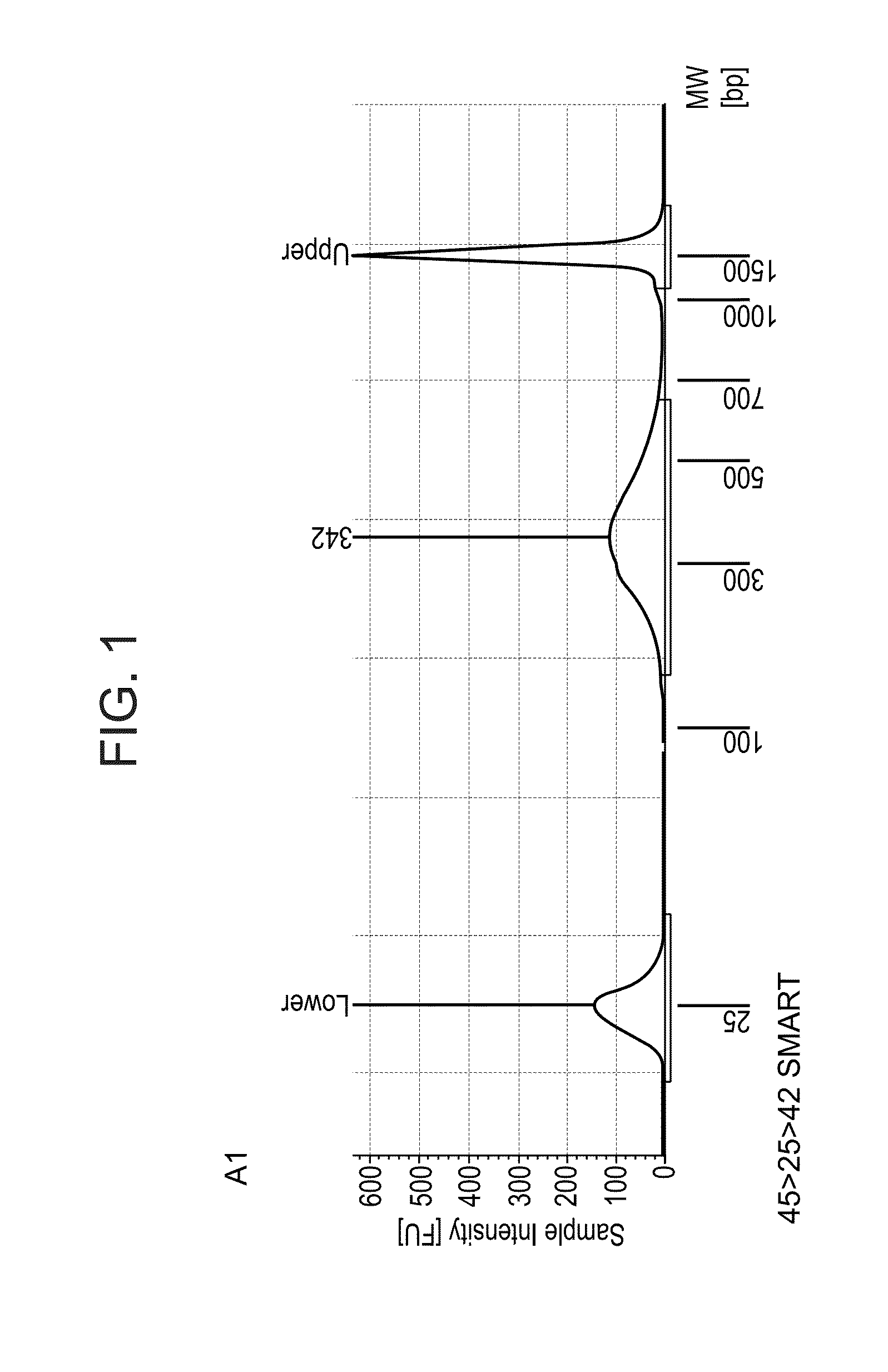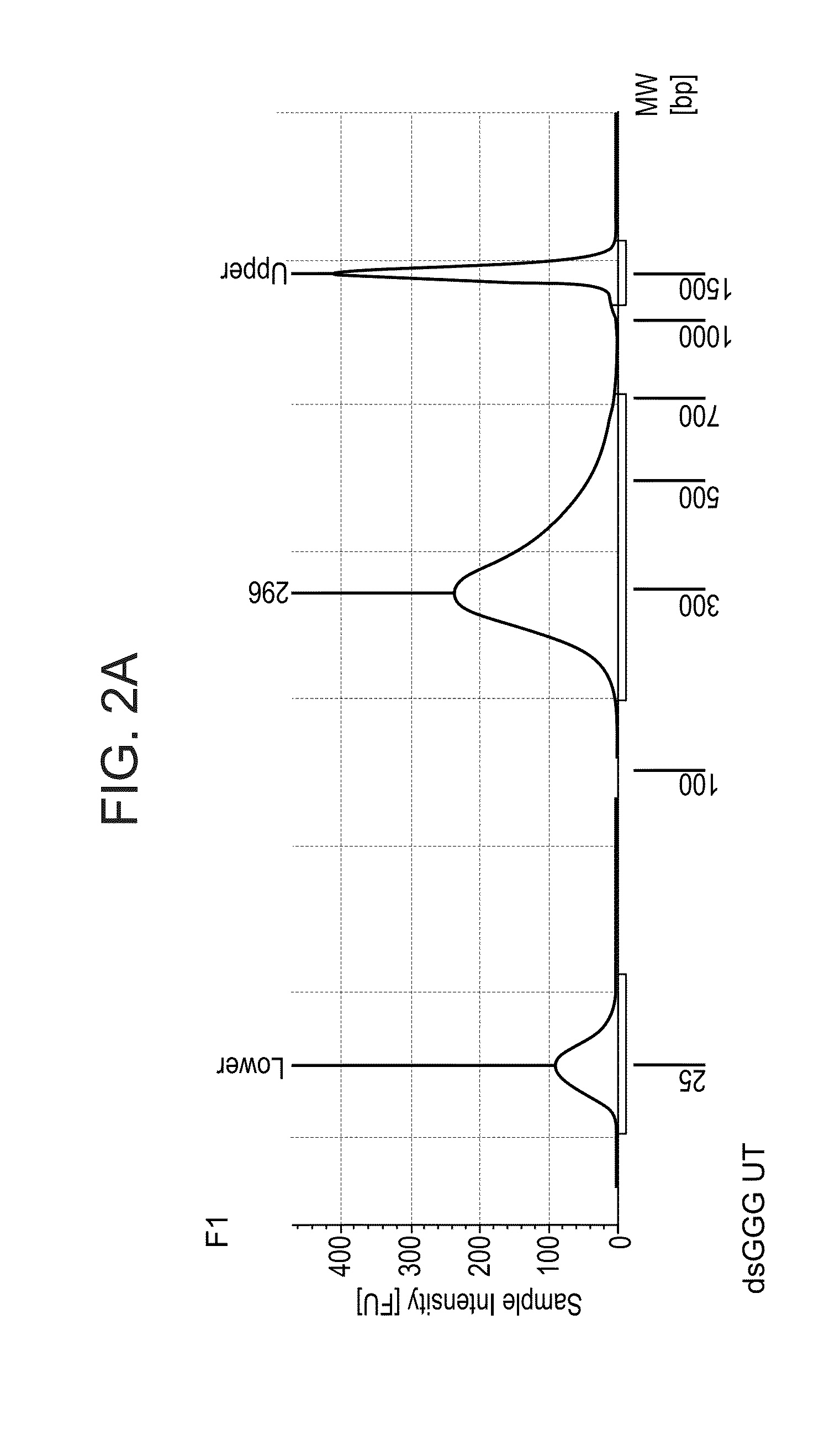High throughput transcriptome analysis
- Summary
- Abstract
- Description
- Claims
- Application Information
AI Technical Summary
Benefits of technology
Problems solved by technology
Method used
Image
Examples
example 1
Protocol for Generating Labeled cDNA from RNA Sample
[0264]Reagents:
[0265]All reagents must be nuclease-free. Unless indicated otherwise, all reagents should be stored at room temperature (20-25° C.).
[0266]Starting material: ˜100 ng of RNA sample for TRANS-seq or one cell (10-30 pg range) for the scTRANSeq protocol.
[0267]Dulbecco's phosphate buffered saline (PBS) without Ca2+, Mg2+, (Beit Haemek Biological Industries, cat. no. 02-023-1).
[0268]Water, molecular biology grade (Sigma, cat. no. W4502).
[0269]Tris buffer 1 M, pH 8.0, molecular biology grade (Calbiochem, cat. no. 648314).
[0270]TRITON X-100, molecular biology grade (Calbiochem, cat. no. 648466).
[0271]Lithium Chloride 8 M, molecular biology grade (Sigma, cat. no. L7026).
[0272]Tween 20, molecular biology grade (Calbiochem, cat. no. 655204).
[0273]RNA Fragmentation buffer (New England Biolabs). Store at −20° C.
[0274]Dynabeads oligodT kit (Invitrogen). Store at 4° C.
[0275]SMARTScribe reverse transcriptase (Clontech). Store at −20°...
example 2
Comparing the Transeq Method with Template Switch Method
[0375]To assess the efficiency of each method, the following parameters were measured:
1. library concentration;
2. Library size and distribution*: a sample of the library was run in a tapestation, a device that replaces bioanalyzer; *to assess size of the library, i.e. the DNA fragment length distribution, which also serves to detect possible unexpected products.
3. Efficiency (QC) by measuring the levels of gene expression and how much it is amplified by the PCR step. The expression of the gene Actb (which encodes for beta-actin) was measured.
[0376]Results
[0377]For template switch (TS), 500 ng of total RNA extracted from mouse tissue was used. After 18 cycles of PCR library amplification, a library concentration between 18 and 19 ng per μl in 20 μl library was obtained, and an Actb gene signal enriched by PCR corresponding to 5 to 6 PCR cycles (this corresponds to a 32 to 64× amplification) with respect to the Actb signal after ...
example 3
Single Cell Transeq (scTRANSEQ)
[0381]Amplification of samples is represented in FIG. 5.
[0382]For single cell transcription profiling, individual cells are first collected, for example by FACS sorting, into a 96-well PCR plate, which contains a mild lysis buffer and the scTRANSEQ reverse transcription (RT) barcoded primer. This primer begins with a T7 RNA polymerase promoter sequence, and contains also adapter sequences required for sequencing.
[0383]After collection cells are immediately frozen at −80° C. to enhance cell lysis by a freeze / thaw cycle.
[0384]After thawing, lysed cells are heated to open secondary RNA structures, allowing annealing of the RT primer. Next, an RT reaction mix is added to each well. This first RT reaction, RT #1, is performed with a RT enzyme devoid of Tdt activity, and will synthesize cDNA from mRNA ending with a polyA tail. Note that the RNA is not previously fragmented and full mRNA molecules are expected to be reverse transcribed.
[0385]Following RT #1, ...
PUM
| Property | Measurement | Unit |
|---|---|---|
| Length | aaaaa | aaaaa |
Abstract
Description
Claims
Application Information
 Login to View More
Login to View More - R&D
- Intellectual Property
- Life Sciences
- Materials
- Tech Scout
- Unparalleled Data Quality
- Higher Quality Content
- 60% Fewer Hallucinations
Browse by: Latest US Patents, China's latest patents, Technical Efficacy Thesaurus, Application Domain, Technology Topic, Popular Technical Reports.
© 2025 PatSnap. All rights reserved.Legal|Privacy policy|Modern Slavery Act Transparency Statement|Sitemap|About US| Contact US: help@patsnap.com



